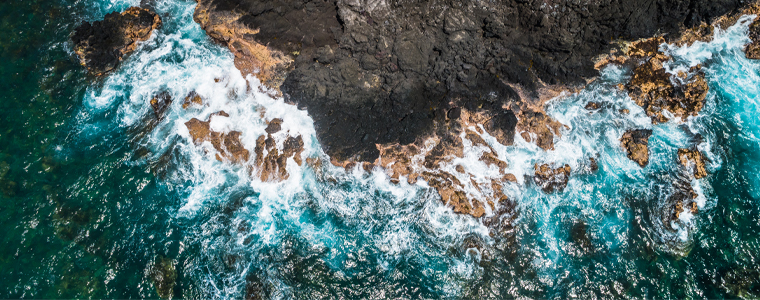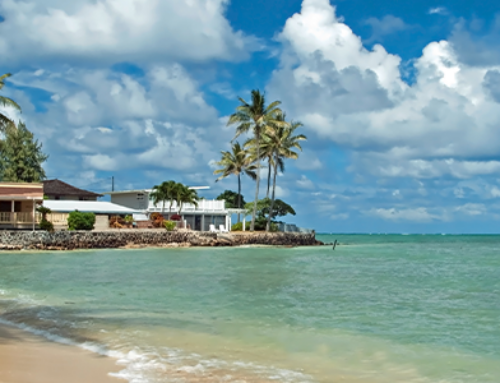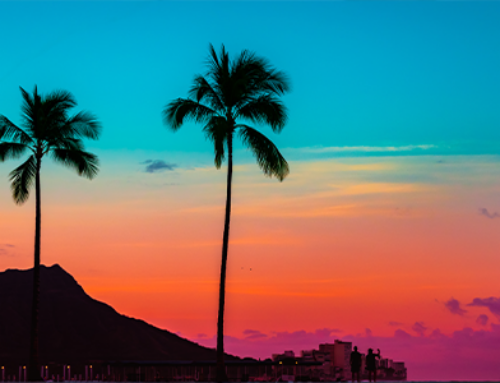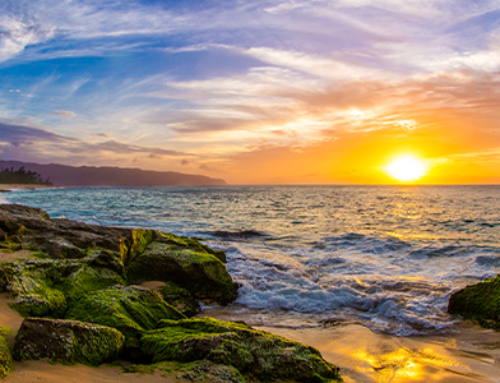Last Updated: 7/4/2022
The island of Hawaii (a.k.a., The Big Island) offers its residents a little bit of everything. Waterfalls, miles of breathtaking beaches, five volcanoes, snowcapped mountains, tropical rainforests—you’ll find it all on the Big Island. Off-the-grid living? Check. Costco, Home Depot, Walmart and Target? Check and check. At the end of the day, the size and diversity of The Big Island offer you the opportunity to build the lifestyle you want, at the Hawaiian island chain’s most affordable prices.
Now, when it comes to where to live on the Big Island, the famous debate focuses on the Kona side (the leeward, dry side of the island) versus the Hilo side (the windward, wetter side of the island).
In this guide, we’ll focus on what it’s like to live in Kona. We’ll walk you through where to live, where to shop and where to have fun in order to give you a sense if the Big Island is right for you, and, if so, whether the Kona side might make a great new home.
First, let’s do a quick dive into the famous Kona vs. Hilo debate.
Living Kona Side vs. Living Hilo Side
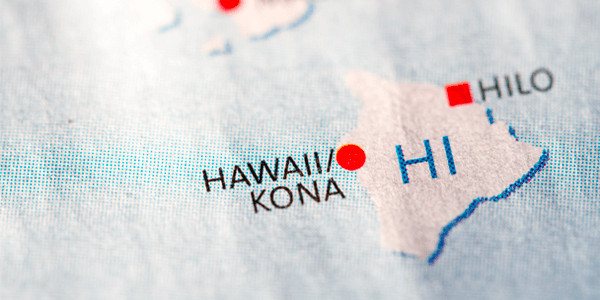
Kona actually means “leeward” in Hawaiian which, for you non-sailors, means the side of the island that’s sheltered from the prevailing tradewinds. In Hawaii, the trades blow East-Northeast. They make their presence known nearly every month of the year, although they tend to die down in the Fall months. As a result of this weather pattern, Hilo gets more rain to cultivate its lush, tropical landscape while Kona enjoys dry, sunny beaches.
Kona is also the hub of tourism for the island, while Hilo plays host to the University of Hawaii and the county seat, along with all the government offices that come with that privilege.
At the end of the day, if you’re deciding between Hilo and Kona, we suggest you visit both. We’ve heard plenty of stories from people who were dead set on Kona, then ended up moving to Hilo a few months later—and vice versa.
Overall, if you’re more interested in a lively area with restaurants, bars and commerce, Kona is probably the right side of the island for you. If you’ve long dreamed of living in a house surrounded by nature, one where you can’t even see your next-door neighbors, try Hilo.
Now, if you’re still interested in exploring the Kona side, let’s talk about where to live.
Where to Live in Kona
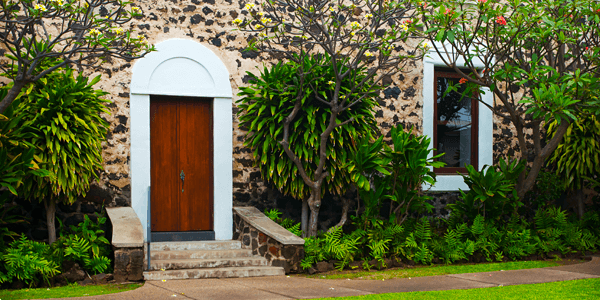
The Big Island is made up of nine districts, which include North Kona and South Kona. Within those two districts, you’ll find plenty of different neighborhoods to live in, each with their own distinct personality. You might want to check out:
- Kailua-Kona: Kailua-Kona was the capital of the Kingdom of Hawaii when it was first unified under King Kamehameha I. (Note that Kailua-Kona is so named to differentiate it from other “Kailuas” on both Oahu and Maui.) Although this is probably the busiest area in Kona, it’s also the most convenient. You’ll have plenty of bars, restaurants and shops within walking distance. However, if it’s quiet living you crave, Kailua-Kona may not be the right spot for you.
- Holualoa: Widely known as an artist’s community with galleries that line the streets of Holualoa Town, Holualoa offers a slower, more charming, small-town alternative to busy Kailua-Kona. Thanks to its elevation—Holualoa sits at around 1500 feet above sea level—you’ll also enjoy cooler temperatures year-round.
- Kahaluu-Keauhou: If you have a generous budget, Kahaluu-Keauhou offers beautiful coastal views and consistent cool breezes from the tradewinds. You’ll also enjoy easy access to a shopping center and Kahaluu Beach Park, which features excellent snorkeling.
- Captain Cook: Lower housing costs, secluded living and easy access to the protected waters of Kealakekua Bay attract families to this South Kona neighborhood. If you’re looking for something a little off the beaten path, this area might be right up your alley.
One thing you’ll want to be aware of when choosing your neighborhood is the Big Island phenomenon known as vog. Vog (Volcanic smOG) is a form of air pollution resulting from volcanic emissions that include sulfur dioxide and other volcanic gasses, most of which originate from Kilauea.
Vog creates a smog-like haze, and it’s also been known to irritate respiratory systems, especially in people with asthma. Depending on which way the winds blow, vog can be found in multiple locations on the Big Island.
However, the predominant tradewinds have a habit of pushing the vog west or southwest. That being said, the weather in Hawaii can shift on a dime, so today might bring vog and the next day might bring sunshine. If you have a sensitive respiratory system, though, you might consider moving toward the northwest side of the island, where vog is less likely.
Average Rent:
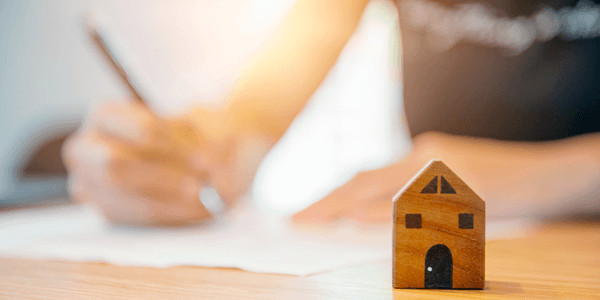
The Big Island features some of the Hawaiian islands’ most affordable rents, and costs vary widely depending on location, features and amenities of the property you choose. Craigslist will be a good source for you, as will talking to people you know on the island. Friends are great resources for locating those hidden gems!
At the time of writing this, consider these rents a ballpark for the Kona area, even though prices vary widely, depending on your individual choices:
- 1-bedroom: $1,200
- 2-bedroom: $1,800
Where to Shop
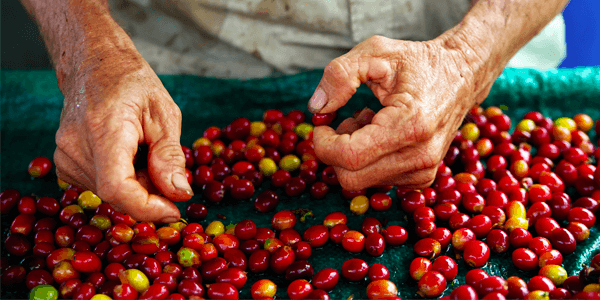
As we mentioned, the Kona side of the Big Island offers plenty of big box stores like Costco, Safeway, Target, Lowes and Starbucks.
However, as a local business, we love to support other local businesses who make up our Big Island economy. These businesses give our island character and charm, and we love to see them thrive.
Some of our favorites include:
- Kona Coffee & Tea, featuring 100% Kona coffee and teas so you can enjoy the coffee that’s grown right here on the Big Island.
- The Pure Kona Green Market – A small but robust farmer’s market in Captain Cook that’s open every Sunday.
- The Kona Natural Soap Company – Great for gifts or for yourself, this Kona-made soap is made from Hawaii’s most exotic natural ingredients. (Don’t miss the chance to take a tour of their coffee and chocolate farm, too!)
- Hamakua Macadamia Nut Company, featuring 100% Hawaiian macadamia nuts, grown on the Big Island.
- Umeke’s, serving local seafood tastes as well as their award-winning “Best Poke in Hawaii.” Try the Bulleh Fries!
- Ola Brew Co., one of the newest entries to the Hawaiian craft beer scene who brew their beer on island.
Where to Work
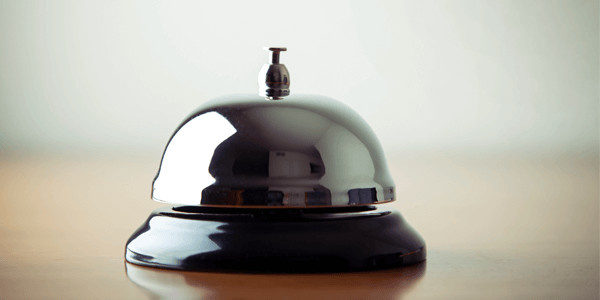
The Big Island typically features the islands’ highest unemployment rate. However, it’s worth noting that rate is often a point lower than the average unemployment rate of the Mainland. Still, if you come to Kona with a job in hand—or you’re moving locally from another place on Hawaii—you’ll have a leg up on getting settled into your new life.
If you haven’t secured employment, take a look at the Big Island’s biggest industries to generate some ideas for your search. As you might expect, tourism and its associated industries rank high with the Big Island seeing 100,000-175,000 visitors a month:
- Hospitality and food service (13%)
- Retail (13%)
- Healthcare and social assistance (10.5%)
- Educational services (9.2%)
- Construction (8.2%)
What to Do on Your Days Off
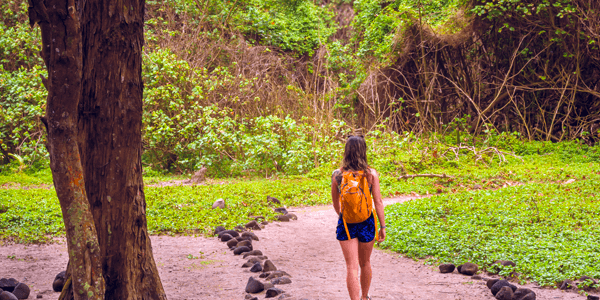
If you love to explore the outdoors, you’ll find plenty to do around Kona. Plus, with the a diverse ecosystem of the Big Island at your fingertips, you’re sure to find the right activity for you, even if you need to do some driving. Below, we’ve shared some of our favorite activities on the Kona side and beyond.
- Hit the beach – You’ll find gorgeous beaches all up and down the western coast. Some of our favorites include Maniniowali Beach and Kamakahonu (King Kam) Beach. And don’t forget to explore the other coasts for more dramatic beaches, including the green sand beach of Papakolea and Punaluu black sand beach.
- Visit Volcanoes National Park – Cruise the 10.6-mile drive around the Kilauea caldera, peer at the Halemaumau Crater to get a glimpse of the volcano goddess, Pele, who is said to make her home in its vents or bask in the wilderness during a backcountry hiking trip. Grab an annual pass which will also get you access to Puuhonua o Honaunau National Historical Park and Haleakala National Park on Maui.
- Take a hike – The Big Island is a hiker’s paradise, with trails all over the island. To get you started, try Kaloko-Honokohau National Historical Park on the Kona side. You’ll get a taste of the history and culture of the ancient Hawaiians by following the trails that lead you to sacred temples and old petroglyphs. When you’re ready to venture further, we love the Waipio Valley. If you’re nervous about the drive or the hike itself, you can always go first with a tour to check things out.
- Get wet – Don’t forget to enjoy the ocean! Catch a wave at Kahalu’u or snorkel Kealakekua Bay, the place where Captain James Cook first landed in the Hawaiian islands and gave them the name of his patron, the Earl of Sandwich. All around the island, you’ll also find your share of sailing, windsurfing, foiling, outrigger canoeing and just about every kind of watersport you could imagine.
- Soak up the views – If driving is more your style, Kona offers plenty of scenic drives. Head up the slopes of Hualalai or Mauna Loa to enjoy vast views of Kona’s coffee fields. (Don’t miss a stop at the unique St. Benedict painted church!)
- Play 18 holes – The Big Island is known as the unofficial golfing capital of the Hawaiian islands. Additionally, Mauna Kea was recently ranked #19 in Golf Magazine’s top 100 golf courses. You’ll find courses all over the island, with many clustered on the western coast. If golf is your game, you’ll keep busy on the Big Island.
- Catch a flight to another island – Mokulele and Hawaiian offer frequent inter-island flights, and now that Southwest Airlines has joined the market, prices are expected to drop even lower. If you catch a case of island fever, a quick weekend away to Maui or Oahu can offer you an easy cure.
Making Your Home in Kona
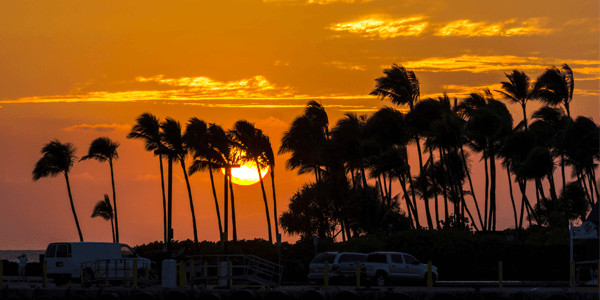
Whether you’re moving from the Mainland, relocating from another island or simply transitioning from another part of the Big Island, Kona has a lot to offer: sunny beaches, easy access to many of the island’s conveniences and plenty of activities to keep you busy. And although we’re sure the age-old “Kona vs. Hilo” debate will never truly get solved, by making your home in Kona, we can tell which side you’re on.
Need a hand moving to Kona? We’d be happy to help with local moves, Mainland moves and anything in between. Just reach out to us for a quote. We’ll help you get everything to your new home safely, easily and affordably.
Still wondering if you should move to Kona or another island? Click below to read our blog post for some more information that will help you decide:
Tell us about your move!
